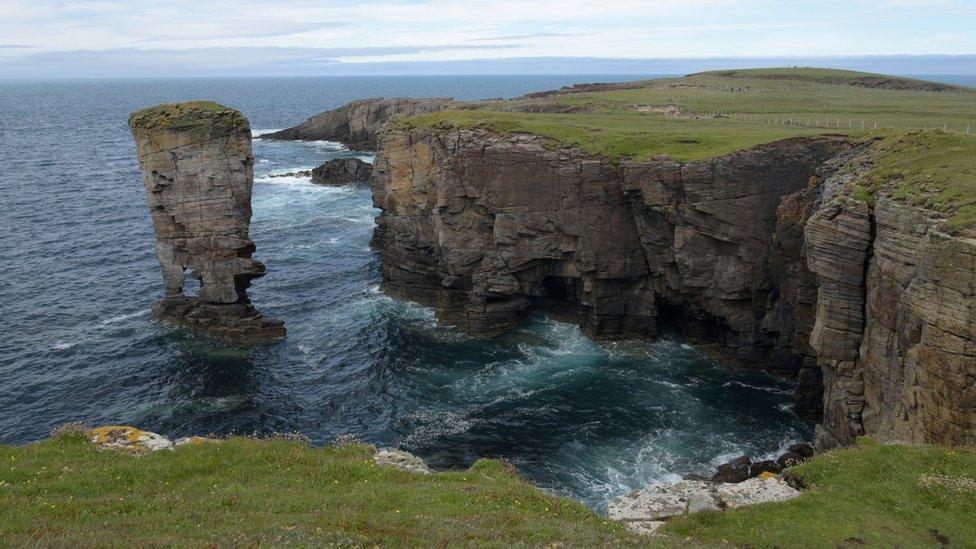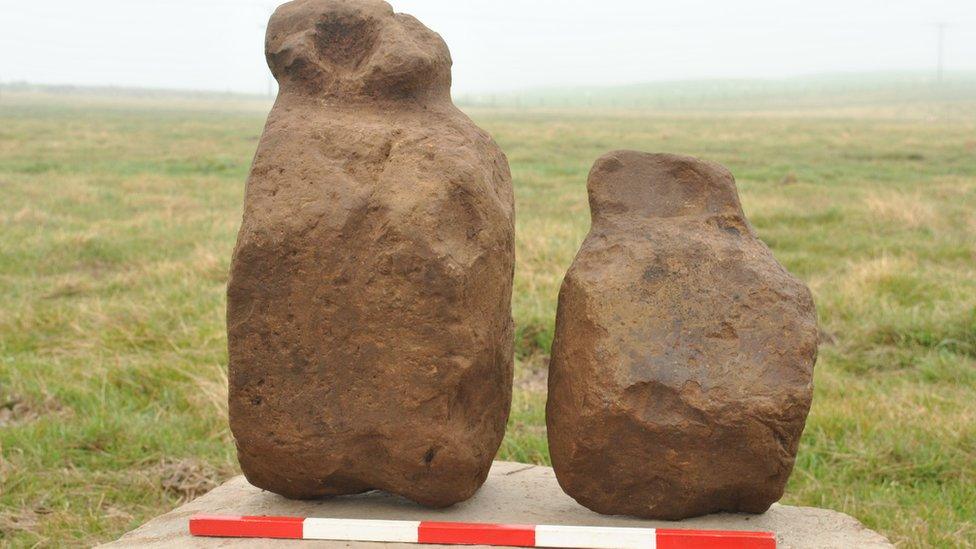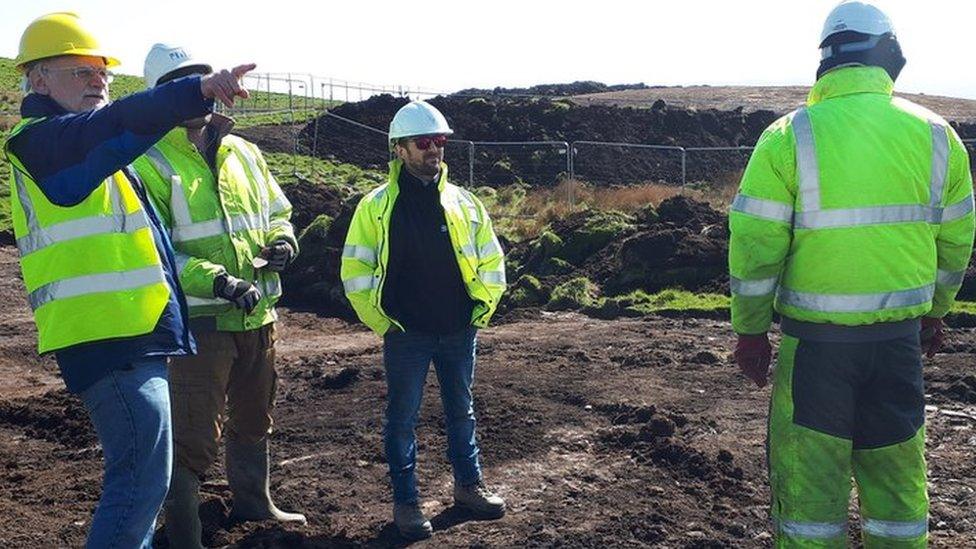Women 'led Bronze Age immigration to Orkney'
- Published

Mass immigration to Orkney during the Bronze Age replaced most of the local population - and was largely led by women, according to new research.
Experts carried out analysis of ancient DNA from human remains on the islands.
The study, by the universities of Edinburgh and Huddersfield, combined archaeology with the study of ancient human remains from the Bronze Age.
They said most resettlements across Europe were typically led by men as livestock farming expanded.
However, the researchers found "the exact opposite" in Orkney, where the Bronze Age newcomers were mainly women.
The male lineages from the original Neolithic population survived for at least another 1,000 years - something not seen anywhere else.
They had been largely replaced by the Iron Age, which followed the Bronze Age, and are described as "vanishingly rare" today.
Period of integration
The researchers studied human remains from the Links of the Noltland site on the remote northern island of Westray.
They believe Orkney is different because of the stability and self-sufficiency of farmsteads on the islands.
They also believe that the islands may have been less insular at this period in its history than had previously been assumed.
Experts say there was an extended period of integration between the indigenous males and newcomers from the south over many generations.
Jim Wilson, professor of human genetics at the University of Edinburgh's Usher Institute, said: "It's absolutely fascinating to discover that the dominant Orcadian Neolithic male genetic lineage persisted at least 1,000 years into the Bronze Age despite replacement of 95% of the rest of the genome by immigrating women.
"This lineage was then itself replaced and we have yet to find it in today's population."
Related topics
- Published9 December 2019

- Published8 May 2019
